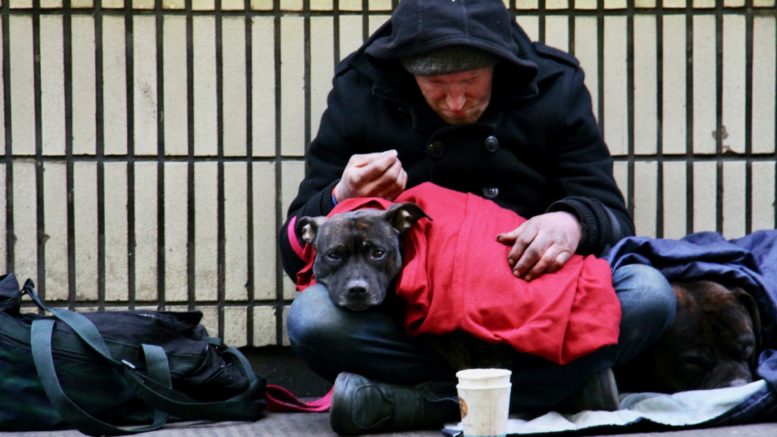For millions in the Golden State, economic inequality brings a different kind of peril to daily life.
By Danny Feingold
This story is produced by the award-winning journalism nonprofit Capital & Main and co-published here with permission.
A powerful tidal wave is building, feeding off the primal desire to reclaim a lost sense of normalcy. There is no place in the country where that desire is closer to fruition than in California, with COVID infection rates lower than in any other state and a full reopening only a day away. Even for those who have had a taste of liberation from the purgatory of the past 15 months, June 15 was looming large, promising a return to something we thought might be gone forever.
Amidst our collective sense of relief, it is so easy to forget what normalcy actually means. For many, it is material comfort, an abundance of food, shelter and leisure without the stalking horse of an invisible killer that cut off physical contact and rendered everyone vulnerable.
But for a shockingly large number of people in the nation’s most populous state, normal was—and is—an entirely different reality. As we move headlong into reopening, we would do well to ask ourselves if we are really willing to let so many of our fellow Californians go back to a way of life nearly as perilous as the one we are now leaving behind.
Here is a snapshot from that halcyon time just before COVID-19 turned everything upside down:
- California’s unsheltered homeless population accounted for more than half of all the unsheltered homeless in the U.S.
- Nearly one in five California children were living in poverty before the pandemic.
- California had the nation’s highest percentage of residents burdened by high housing costs, at nearly 42 percent.
- In the decade after the Great Recession, the bottom 20 percent of California households saw their income fall even as the top 5 percent watched their income grow by 22 percent—making it no surprise that California saw the nation’s fourth highest increase in economic inequality.
The economic devastation that accompanied the pandemic has been concentrated among the very people who were already struggling. While the extremely rich generally got much richer, those on the margins endured not only catastrophic job losses but enormous personal tragedy.
The wildly disparate health impacts of COVID-19 are as stark as the state’s economic inequality. Californians with a median income of less than $40,000 had a case rate 37 percent higher than the statewide average, a disparity mirrored by the racial breakdown of the pandemic. Latinos in California were dramatically overrepresented in both COVID cases and deaths, with a death rate 21 percent higher than the state’s overall rate, while the death rate of Black Californians was 8 percent higher than statewide.
The double whammy of pervasive economic inequality and racial discrimination left poor people and communities of color most vulnerable to the pandemic. But as COVID-19 recedes, we face the prospect of returning to a status quo of chronic suffering, minus the headlines that have focused our gaze these past 15 months.
Big ideas and ambitious public investment will be needed to attack the roots of California’s dystopian economic and social order. The intertwined homelessness and affordable housing crises will not yield to the kind of tinkering that has mostly characterized our policy solutions, nor will the advent of a $15 an hour minimum wage substantially reduce working poverty.
As the state reopens, solutions laid out in recent reports such as “A New Social Compact for Work and Workers” must be debated vigorously and urgently. Commissioned by Gov. Gavin Newsom, the report sets forth a number of hugely ambitious ideas, including the elimination of working poverty in California by 2030 and the creation of a portable benefits plan for the state’s millions of gig workers. These proposals are likely to meet fierce resistance from powerful elements of the business lobby, notably the California Chamber of Commerce, whose annual “Job Killers list” targets a wide range of legislation designed to combat economic inequality, and does so with remarkable effectiveness.
The urgency of pushing back against CalChamber and other opponents of rebalancing economic power is made more acute by California’s enormous budget surplus, which has created a rare opportunity for the kind of investment that could be transformational. Large-scale funding increases for education, affordable housing, child care, the social safety net—all are possible, and desperately needed.
This will only happen, though, if there is a groundswell of public support for a new normal that relegates rampant inequality to the same dustbin we hope will be the permanent home of COVID-19.
Copyright 2021 Capital & Main


Be the first to comment on "Analysis: As California reopens, a brutal ‘normal’ awaits many"